Intelligent monitoring system on West Seattle High-Rise Bridge nearly operational
This is a movement sensor on Pier 18 of the West Seattle high rise bridge measures expansion and contraction. Pier 18, on the east side of the high rise section of the bridge has a neoprene bearing that is locked potentially adding stress to the bridge. It's set to be repaired in the next few months. Photo provided by BDI.
Wed, 05/13/2020
information from Seattle Department of Transportation
The new intelligent monitoring system installation is nearly complete on the West Seattle High-Rise Bridge and will be fully operational mid-May.
We recently shared our emergency response plan that we developed with an inter-agency task force. Seeing an emergency evacuation Fall Zone can be a little frightening, and we want to assure you that there are no current indications that we’ll need to activate the emergency response plan.
Here’s an in-depth look at what the intelligent monitoring system is all about and what information we hope to gain from it.
For over a month now, we’ve been installing new monitoring instrumentation consisting of additional movement sensors, crack monitors, and monitoring cameras throughout the bridge. Our goal is to improve our understanding and tracking of the health of the West Seattle High-Rise Bridge with greater precision and with real time data.
While installation has been underway, we've continued performing regular bridge inspections.
These inspections revealed that while crack growth slowed when traffic was removed from the bridge, it hasn’t stopped the cracking. The new monitoring system is critical to recording this data.
Additional monitors have been installed to better understand crack growth as part of our Phase 1 work to stabilize the West Seattle High-Rise Bridge. This phase also involved removing traffic from the high-rise bridge on March 23, planning temporary crack arrest measures, and releasing the lateral bearings at Pier 18.
Monitoring and data collecting will continue throughout the life of the project to:
- Keep us informed on how the bridge reacts to environmental changes, bridge stabilization measures, temporary shoring, and potential future repairs.
- Give us a better indication of bridge distress that could warn of impending failure.
- Guide us to a decision about the technical feasibility of repair or replacement.
Monitoring instrumentation has been installed on the bridge’s deck, on Piers 15 and 18, and throughout the center-span girders (with additional monitors being added this week inside the girders).
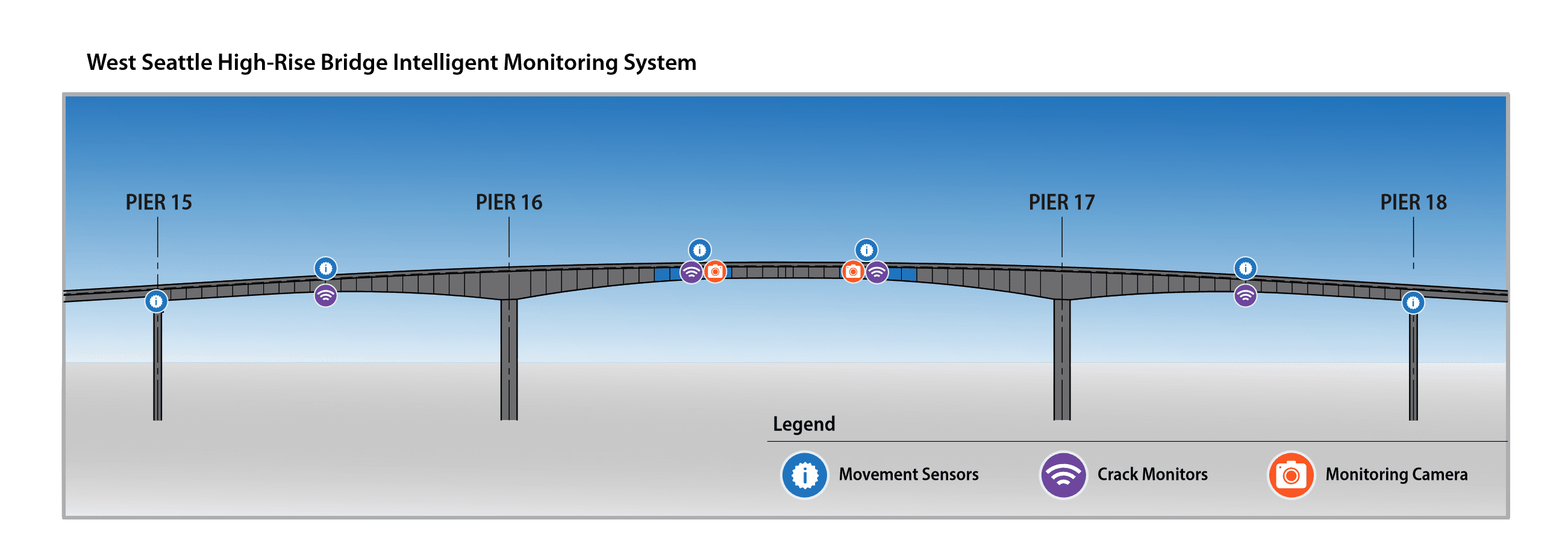
Here’s a closer look at the instrumentation that make up the intelligent monitoring system:
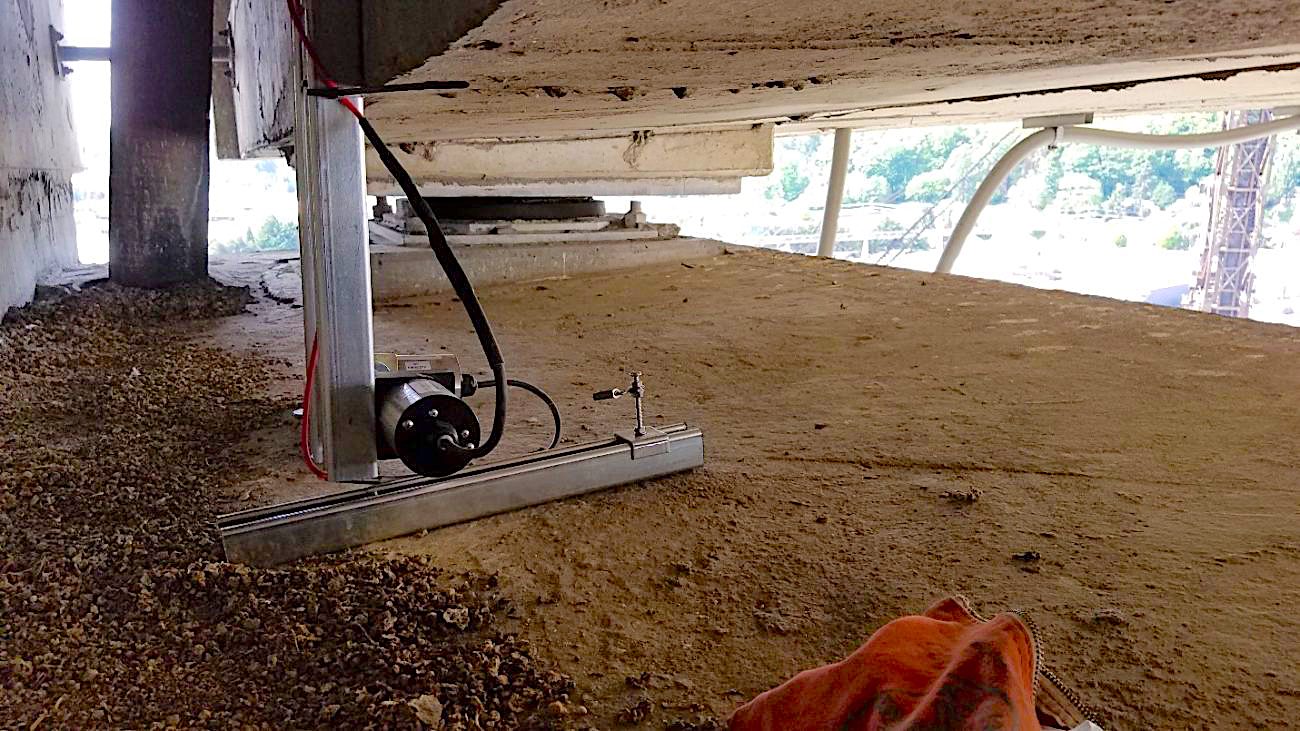
Movement Sensors
Movement sensors track data 24/7 and are extremely sensitive to subtle movements in the bridge’s structure and records varying data by location.
Movement sensors throughout piers 15 and 18 will measure expansion and contraction at the expansion joints. Deck monitors, which were activated and have been recording data since late April, measure vertical and lateral bridge movements in real time.
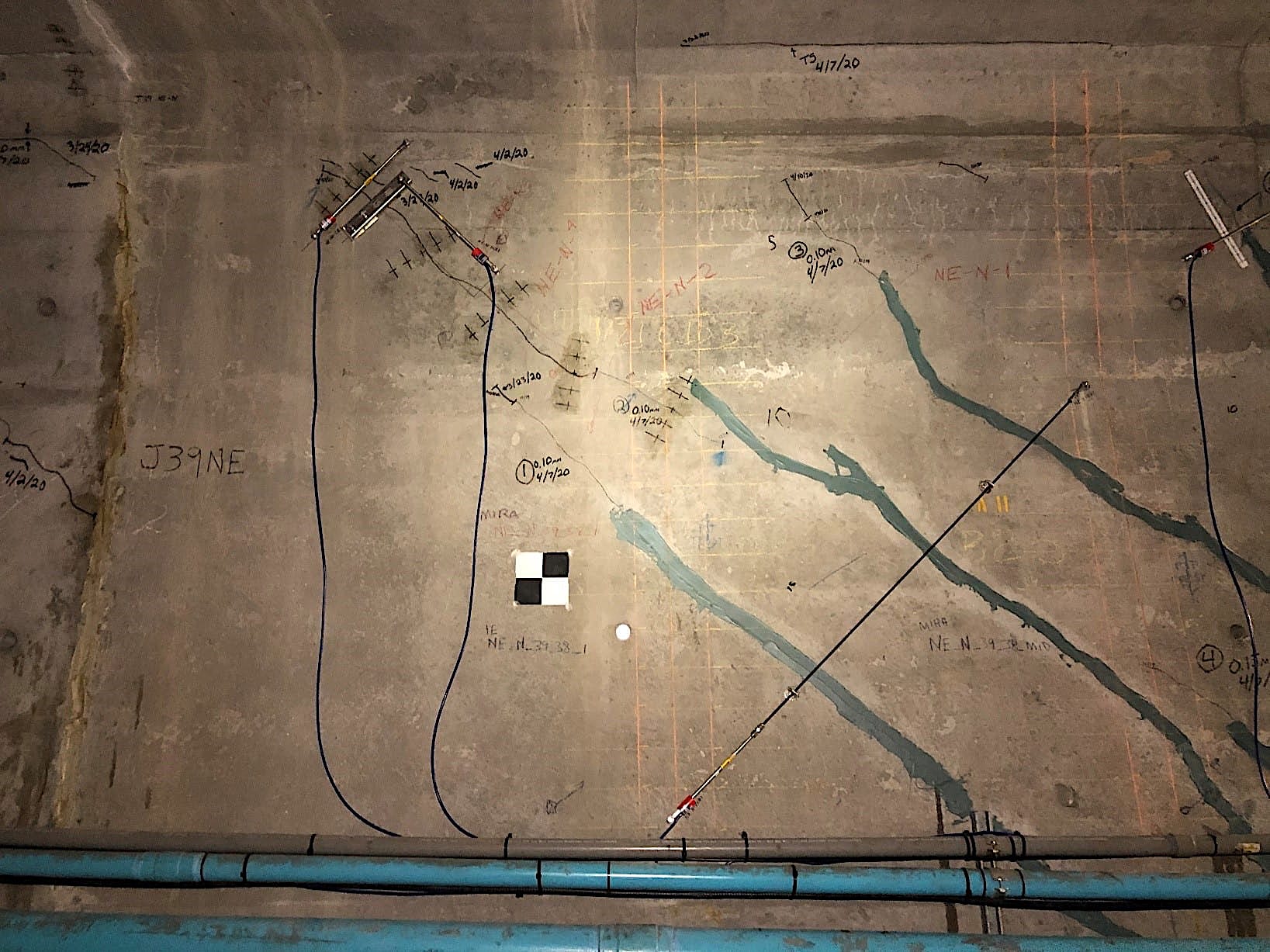
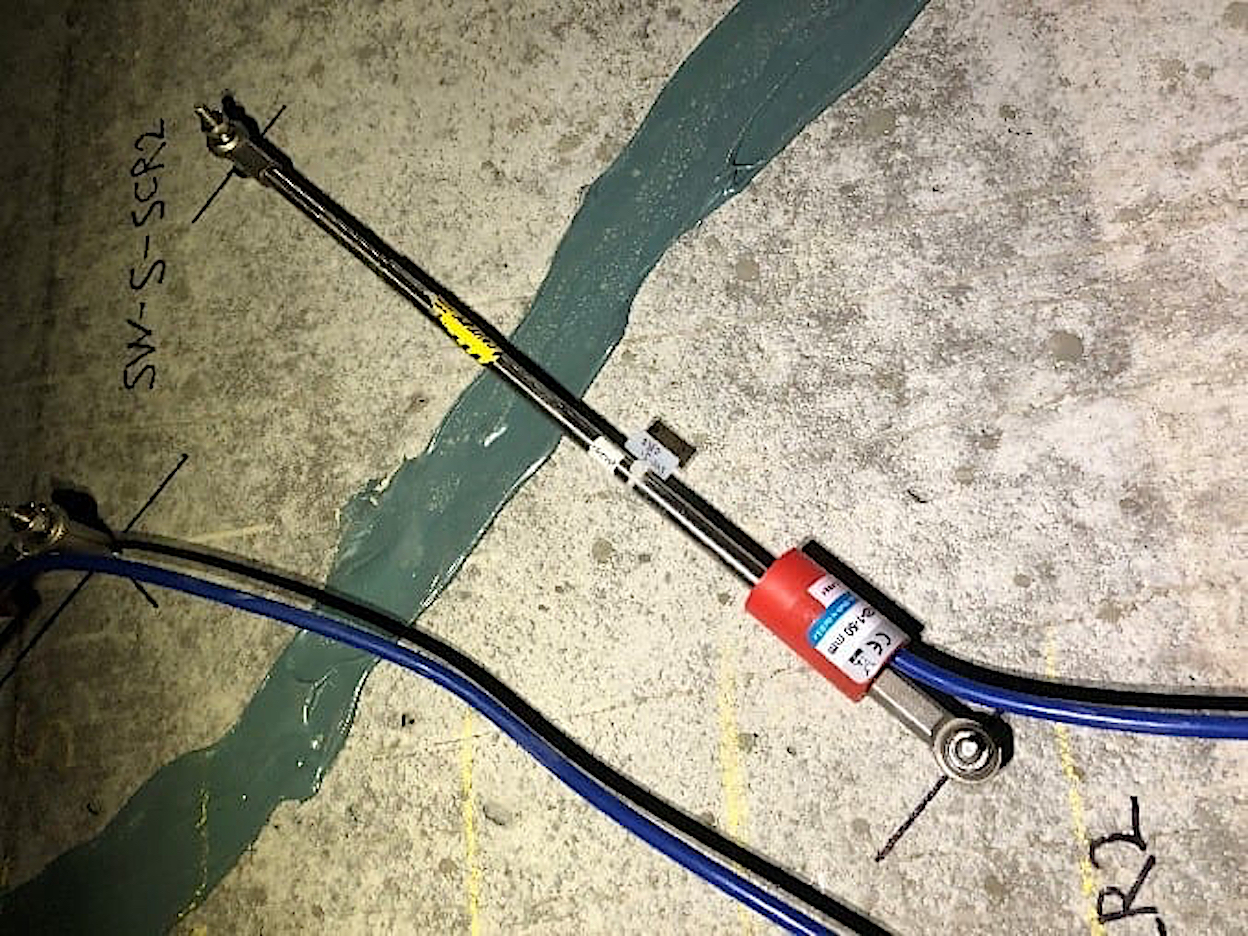
Crack Monitors
More crack monitors have been installed in the bridge girders to measure crack width and slip movement where regular inspections have been monitoring crack changes.
Short-gauge crack monitors are placed over individual cracks, while long-gauge crack monitors cross many cracks and monitor changes over an area. These new crack monitors will complement the current crack monitoring equipment installed in 2014 which could measure the width of cracks in four specific locations on the bridge.
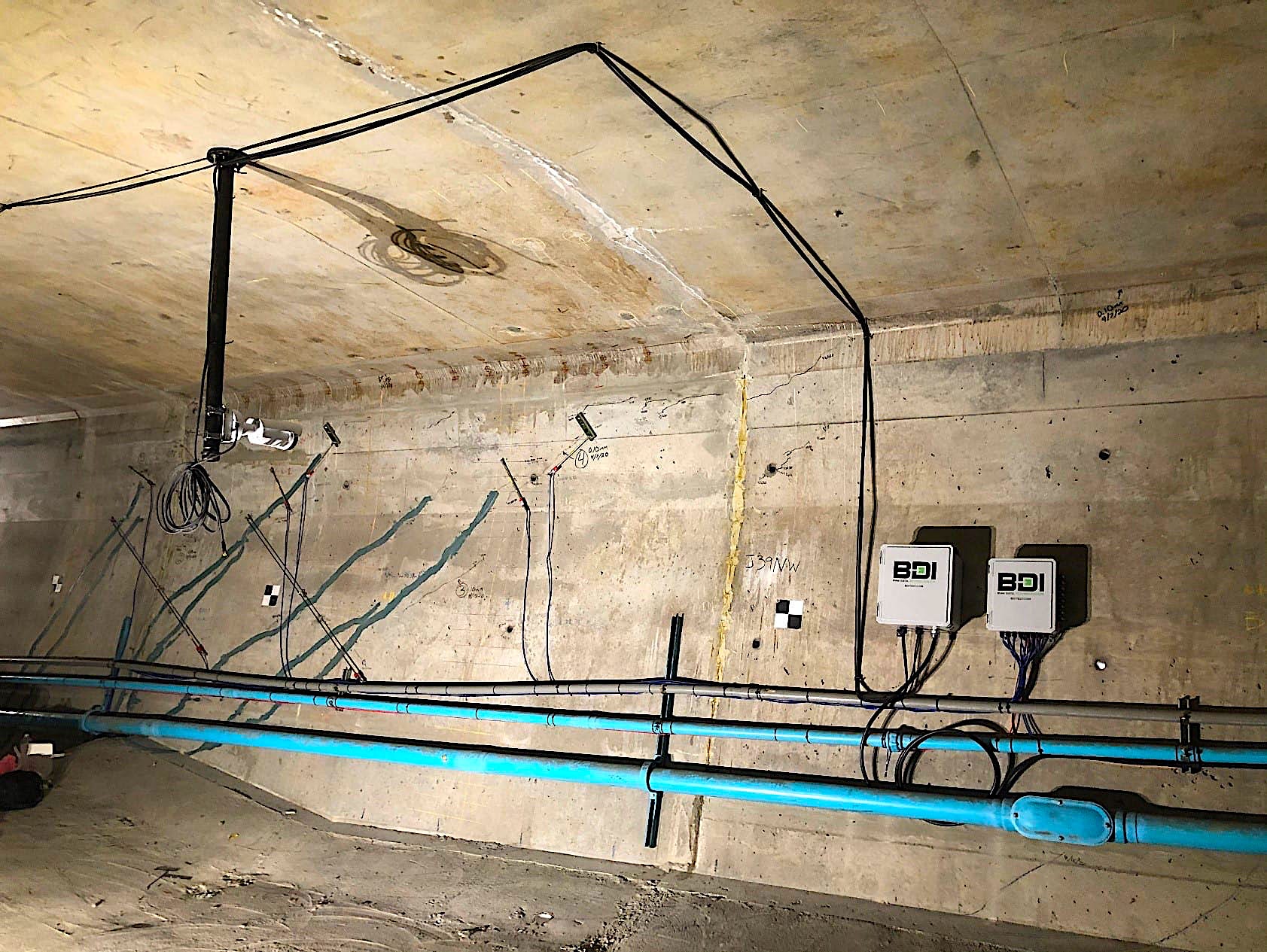
Monitoring Cameras
Monitoring cameras placed near the center span’s main crack areas will record visible crack growth. The cameras provide the ability to perform a quick visual verification if the sensors indicate excessive movement.
Some of the specific issues that the new intelligent system will monitor are the restrained lateral bearings at Pier 18, cracks in the center span that led us to close the bridge, and other cracks that we’ve identified as we continue regular visual inspections.
The new intelligent monitoring system is already ‘talking’ to us and telling us that there is some potential for failure. What we don’t yet know is how great that potential is. The new system will help us better determine that.
While the system monitors the bridge around the clock, it’ll also send real-time alerts when needed, thereby helping engineers and the contractor make informed and time-critical decisions related to bridge strengthening and repairs. These alerts include:
- If there are indications that we should remove crews from the bridge. This alarm will stop work on the bridge until the bridge has been inspected, the nature of the alarm is understood, and it’s deemed safe to continue work.
- If there are indications that an evacuation order may need to be issued for the surrounding area, based on the safety plan.
The thresholds for these alarms may be adjusted as we get to know the bridge better with monitoring.
It’s critical to recognize that the monitoring system simply reports movements. Engineers must interpret the meaning of the data to evaluate bridge safety.
This monitoring system can measure movement, but it can’t look at other potential and visually unobservable problems such as crack depth, voids, or problems with post-tensioning. To check for these, we’re performing non-destructive testing (NDT), which can be done without boring or taking anything apart.
Here’s what happens next, after we collect a few weeks’ worth of data.
Analytic modeling will interpret the data to gain a baseline understanding of the bridge’s behavior. If we observe stable behavior, the bridge will continue to be monitored during and after the temporary crack arrest measure installation and the Pier 18 restrained lateral bearings’ release, to see how the bridge reacts.
Observations will help us decide on longer-term plans like Phase 2, which includes temporary shoring design and installation as well as strengthening and repairs, and Phase 3, determining whether we need a full replacement.
In closing, we’ve also been working with Kraemer to plan repairs on pier 18. We recently shared our emergency response plan and continue to make traffic improvements to help keep people moving in West Seattle.
Sign up to receive West Seattle High-Rise Bridge project update emails.


